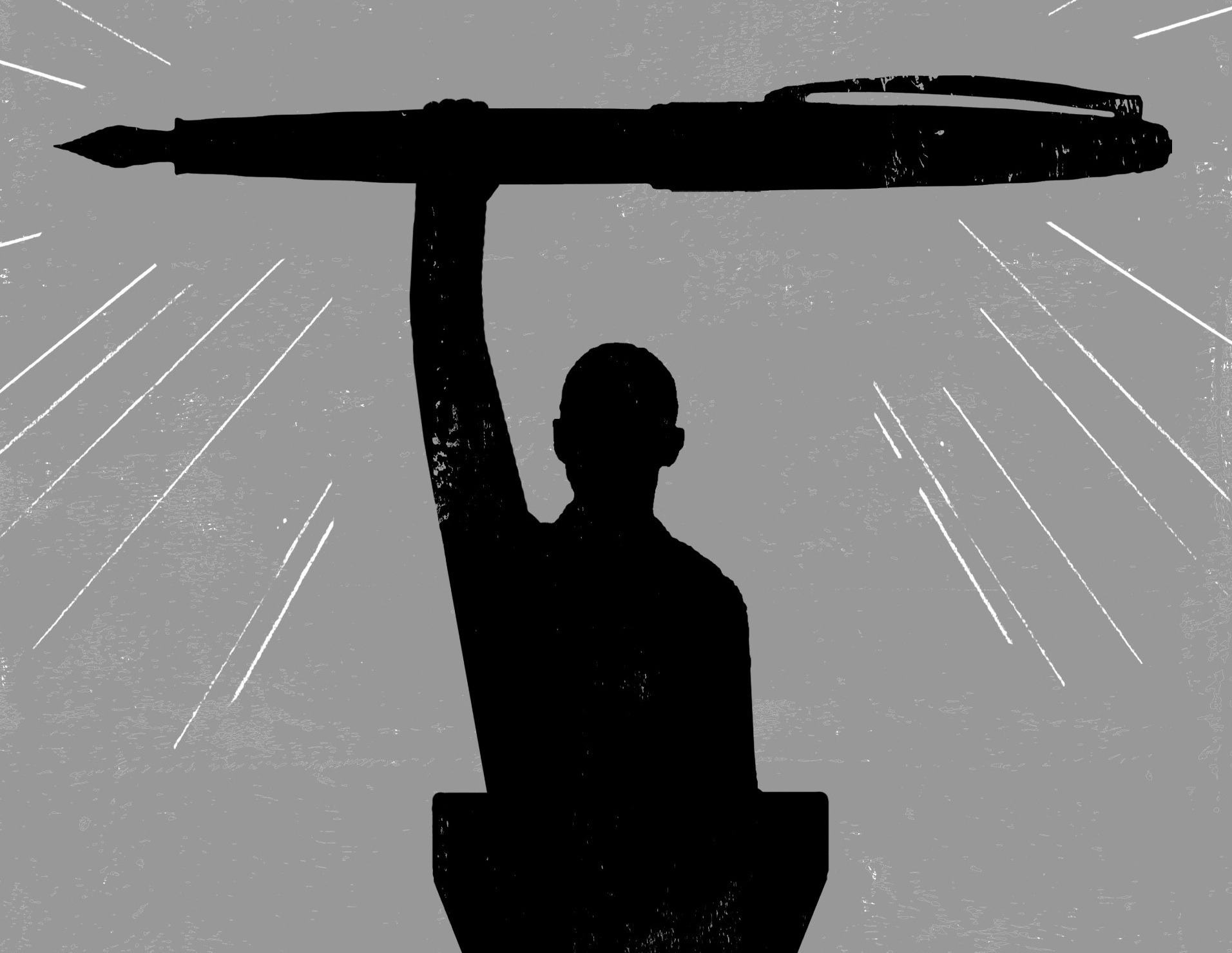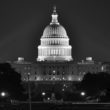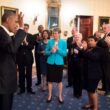For a fleeting moment following the midterm elections, pundits and reporters writing from the political center were inexplicably enthusiastic about the prospect of bipartisan collaboration between President Barack Obama and the 114th Congress.
“If they meet early on to focus on areas of potential cooperation, the tone in Washington could change for the better, and something might get done,” Brookings Institution scholar William Galston wrote on Brookings FixGov website.
“[T]he primary actors over the next two years will be Boehner and Obama, leaders still in search of legacies,” Ben Pershing wrote in The National Journal, describing a determination to create legacies that would lead to bipartisan collaboration between the speaker of the House and the president. (The claim that both leaders lack a legacy ignores the Affordable Care Act, the Dodd-Frank financial-reform law, the bailout of the automobile industry, and a stimulus bill that helped lift the nation out of the Great Recession; and the fact that Boehner has a legacy of obstruction and a failure to manage the Republican House Conference.)
“One thing to note about President Obama’s position is it’s not unusual,” said NPR White House Correspondent Scott Horsley. “Dwight Eisenhower, Ronald Reagan, Bill Clinton and George W. Bush all had to contend with an opposition Congress during their last two years in office. And as [Senator Mitch] McConnell says, they still managed to get some big things done.”
Unilateralism is the norm in the last two years of a presidency. All presidents use executive power at the end of their terms.
Obama’s position is not unusual. It is unique. No modern president has confronted a legislative branch as hostile and politically polarized as the 113th Congress, defined more than anything by a Republican resolve to defy and degrade a Democratic president.
“You have to go back to the 1870s to find polarization to this degree,” Stanford University historian David Kennedy told me. “Political scientists have done the studies. It’s numerically and quantitatively measurable.
“But that was a moment when polarization was understandable, in the wake of the Civil War, the most polarizing circumstance anybody could imagine, so when the Confederate states starting sending members back to Congress, there was going to be friction.”
Kennedy is one of a small group of historians who meet with Obama at White House gatherings focused on presidential history. He sees nothing to suggest that the 114th Congress, which convenes this month, will be inclined to work with the president.
Beyond polarized politics, Kennedy said, “There is a certain iron partisan logic to these things, especially two years before an election, where the incumbent either can’t run or is at great risk and [the Congress] just won’t budge. I don’t see any reason why this Republican Congress is going to behave differently.”
“When John Nance Garner was speaker of the House, the Democrats blocked everything that Herbert Hoover wanted to do, though admittedly that was a short list,” Kennedy said.
Writing at the time of the election, Galston hedged his bets on cooperation, observing that if Mitch McConnell were to begin the new Congress with “red meat” votes for his conservative base, and Obama issued a sweeping executive order on immigration, the American public could expect two more years of gridlock.
The president delivered on the immigration order that he had promised.
McConnell’s red meat was served early when outgoing Senate Majority Leader Harry Reid, in an attempt to head off the runoff defeat of Louisiana Senator Mary Landrieu, allowed a vote on a bill to authorize construction of the Keystone XL Pipeline.
Though it fell short by one vote, the bill would have circumvented the president’s authority to issue a presidential permit for the Keystone project. McConnell promised to bring the same bill to the floor early this session.
In an interview, Galston said he still held out some hope that Republicans in Congress “would consider the president’s action on immigration a one-off” and would be open to bipartisan collaboration.
As the House and Senate convene under Republican leadership, that seems unlikely.
A Unilateralist President
“When you have a dysfunctional Congress and nothing can get done, and you’re dealing with gridlock, presidents will go the executive route,” Douglas Brinkley said.
Brinkley, a Rice University professor of history currently working on a book about FDR, is another historian whom the president has invited to informal colloquia at the White House.
The president initially envisioned what Brinkley described as a “mini-New Deal or Great Society,” persuading the Congress to pass a stimulus bill, the GM bailout, and the Affordable Care Act.
The rise of the Tea Party in response to health care reform, the GOP’s breathtaking move to the extreme right, and growing anti-federal sentiment, taken together, foreclosed on cooperation with the Congress long before the 2014 midterm elections.
In meetings with presidential historians, Brinkley said, Obama has demonstrated a keen interest in the use of executive authority.
“I know that they [White House advisors] said we’ve got to learn every aspect of what’s legally possible using executive power, thus lawyers and government are on it and the president is going to go forward.”
“I’m surprised that the president hasn’t used it more. It is his timidity at using his authority that is astonishing.”
“But he’s not wired that way,” Brinkley said. “He continued to believe he could work with the Congress. He was a man of the Senate, a legislator, they all want to work with Congress.”
There are precedents for the dramatic use of executive authority, and the courts are usually reluctant to intervene when a president acts.
“Franklin Roosevelt signed over 3,000 executive orders—big ones, giant ones. He never read the polls. You just do it,” Brinkley said.
“When Theodore Roosevelt created the Grand Canyon as a national monument, most people thought national monuments were supposed to be small, 60 acres of land and dinosaur bones. Roosevelt did 800,000 acres.
“It went to the courts. It didn’t hit the courts until he was out of office. And it was upheld.
“Usually the courts are sensitive to presidential prerogatives and you don’t see the court system saying that the president acted illegally,” Brinkley said.
“Unilateralism is the norm in the last two years of a presidency. All presidents use executive power at the end of their terms. Even on your last day in office, you get to pardon people with your executive power.”
Do as Clinton Did
Kathryn Dunn Tenpas, who studies the modern presidency and White House operations, believes that Obama should spend the next two years “using the levers of the federal government to promote his agenda.”
In September, Tenpas, a University of Pennsylvania professor of political science and a Brookings Institution scholar, published an article on the Brookings site in which she questioned Obama’s decision to distance himself from his cabinet members.
Obama had recently ended weekly meetings with cabinet members, she wrote, while Bill Clinton had taken full advantage of his cabinet to prepare for the executive actions he took in the final two years of his presidency.
“In one month (January 2001), President Clinton issued roughly three times as many executive orders (12) as compared to monthly averages in 1993, the year with the greatest number of executive orders.” (January 2001 was, in fact, a short month for Clinton, as George W. Bush took the oath of office on January 20.)
“Anecdotally, the Clinton administration, as I understand it, spent three years—1996, 1997, 1998—thinking about what executive orders they could take that would advance their agenda,” Tenpas said in a phone interview.
She is uncertain how Obama is positioned as he moves into his final two years in office.
“Will he be able to yield the same benefits through executive action that his predecessors have? It’s not clear that there has been enough groundwork to date. It takes a certain level of organization to first decide what are the priorities you have for executive action,” she said.
Tenpas described the final two years of a presidency as a race against the regulatory calendar.
Indeed, the final two years are a race.
In 2001, I wrote about the Clinton administration’s late posting of an ergonomics rule in the Federal Register.
Because his Labor Department was late getting the rule listed, a comprehensive list of workplace protections that had been working its way through the rulemaking process since 1989 was overturned by the Republican Congress in early 2001.
“Maybe Obama’s team can work hard and fast and achieve results,” Tenpas said.
Has the Final Push Begun?
The staccato sequence of executive actions following the November 4 elections might be interpreted as Obama’s notice to Congress that he does not intend to go quietly.
From Beijing on November 12, he announced an agreement with China to begin reducing greenhouse gases, overcoming an obstacle to international climate accords that has existed since Bill Clinton failed (and George W. Bush subsequently refused) to secure Senate approval of the Kyoto Protocols on climate change—in both instances, opponents had used as a pretext China’s refusal to commit to reduction of greenhouse gases.
On November 20, Obama announced he had signed a presidential memorandum that will temporarily protect an estimated 4 million undocumented residents of the U.S. from deportation.
On November 26, the Environmental Protection Agency proposed a new rule that will reduce levels of ground-level ozone caused by cars, trucks, industry, and oil and gas production. The new ozone standard has to meet a 2015 court-imposed deadline.
That ozone rule complements a far more sweeping EPA rule scheduled to be finalized this year, which will substantially reduce the volume of climate-altering greenhouse gases created by existing coal-fired power plants.
In both environmental initiatives, Obama used his executive authority and the Clean Air Act, because Republicans in Congress, backed by fossil-fuel interests, refuse to support any significant regulation of greenhouse gases or volatile organic compounds that create ground-level smog.
Republicans in both houses have already filed a perversely captioned “Clean Air, Strong Economies Act,” which would restrict the regulation of ozone levels.
Months before he was sworn in as Majority Leader, Mitch McConnell announced that he will use the appropriations process to block implementation of the EPA’s greenhouse-gas rules, the largest environmental initiative in the Unites States since Congress passed the Clean Air Act in 1970.
Promises by Congressional Republicans to retaliate for the president’s action on immigration—from withholding funds, to censure, to impeachment—have been widely reported.
These partisan reactions to decisions the president made without the consent of Congress suggest what is to come as Republicans prepare to challenge the president’s executive authority.
And there should be much to challenge; regulations on a broad range of topics, perhaps even the use of executive authority to close Guantánamo, as Steve Coll urged in The New Yorker. Obama tried to close the detention center early in his first term, but a bipartisan majority in Congress blocked the effort. The president restarted the process with the transfer of six Guantánamo detainees to Uruguay in early December of last year.
“Shutting down that facility is really much more complicated than he thought it would be when he was a candidate,” Brinkley told me.
“But he is one of these people who are deeply cognizant of promises he made and I would not be surprised if he would try it.
“The last thing he is is a lame duck.
“That’s an overused phrase for people who don’t understand executive power.”
Lou Dubose is the editor of The Washington Spectator.







0 Comments